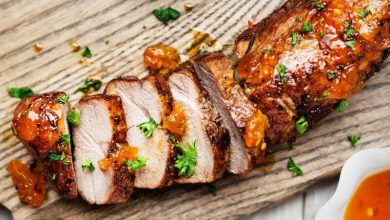🇦🇺 Australian Meatballs 🍽️
Australian meatballs, often referred to as “Aussie meatballs,” are a delicious and popular dish in Australia. These savory, flavorful morsels are similar to traditional meatballs but with a distinct Australian twist. Here’s everything you need to know about them, complete with step-by-step instructions for preparation.
📜 History:
The history of Australian meatballs is not as well-documented as some other dishes, but it’s safe to say that they have evolved from various European and Asian meatball traditions brought to Australia by immigrants over the years. These meatballs are a classic example of Australia’s diverse culinary landscape, combining influences from around the world.
🥘 Components:
Ingredients for Australian meatballs typically include:
- 500g ground beef or a combination of beef and pork
- 1/2 cup breadcrumbs
- 1/4 cup grated Parmesan cheese
- 1/4 cup chopped fresh parsley
- 1/4 cup chopped onions
- 1 egg
- 2 cloves of garlic, minced
- Salt and pepper to taste
- Olive oil for frying
👩🍳 Preparation:
Here’s a step-by-step guide on how to prepare Australian meatballs:
-
Mix Ingredients: In a large mixing bowl, combine the ground meat, breadcrumbs, Parmesan cheese, chopped parsley, chopped onions, minced garlic, and egg. Season with salt and pepper.
-
Form Meatballs: With clean hands, shape the mixture into small, evenly-sized meatballs, about 1.5 inches in diameter. This mixture should make around 20 meatballs.
-
Heat Oil: Heat some olive oil in a large skillet over medium-high heat.
-
Cook Meatballs: Gently place the meatballs into the skillet and cook for about 10-12 minutes, turning them frequently to ensure even browning. They should be cooked through and have a nice golden crust on the outside.
-
Serve: Australian meatballs are versatile and can be served in various ways. They’re excellent on their own, as part of a pasta dish, or even in sandwiches. Garnish with extra parsley if desired.
⏱️ Time Needed:
The preparation and cooking of Australian meatballs typically take around 30-40 minutes, making them a convenient and quick meal option for busy weeknights.
These delightful meatballs are a favorite in many Australian households. They’re loved for their juicy, flavorful interiors and crisp exteriors, and they pair well with a variety of sauces and accompaniments. Enjoy making and savoring these delicious Aussie meatballs! 🇦🇺🍽️😋
📊 Nutrition Facts and Health Information for Australian Meatballs 🍽️
Here’s the nutrition information and some health considerations for Australian meatballs:
🔸 Serving Size: The nutritional values provided are approximate for a serving size of 4 meatballs (approximately 100g).
🔹 Calories: Around 250 calories per serving.
🔹 Protein: Meatballs are a good source of protein, with about 16-18 grams per serving, depending on the type and ratio of meat used.
🔹 Fat: They also contain fat, approximately 15-20 grams per serving. The fat content can vary depending on the meat used and cooking method.
🔹 Carbohydrates: Meatballs contain a small amount of carbohydrates, mainly from breadcrumbs and onions. You can expect around 10-15 grams per serving.
🔹 Fiber: Meatballs are not a significant source of dietary fiber.
🔹 Sodium: The sodium content can vary depending on how much salt is added during preparation, but it’s generally moderate.
🔹 Vitamins and Minerals: Meatballs can provide essential nutrients such as iron, zinc, and B vitamins, especially if you use lean meat.
🔹 Health Considerations:
- Protein: Meatballs are a good source of high-quality protein, which is essential for muscle and tissue repair.
- Fat: The fat content can be on the higher side, so it’s advisable to use lean meat or drain excess fat after cooking for a healthier option.
- Portion Control: Keep an eye on portion sizes to manage calorie intake, as overeating can lead to excess calorie consumption.
Remember that the nutritional content can vary depending on the specific ingredients and preparation method you use. If you’re concerned about the nutritional content or have specific dietary requirements, it’s a good idea to consult with a healthcare professional or nutritionist.



